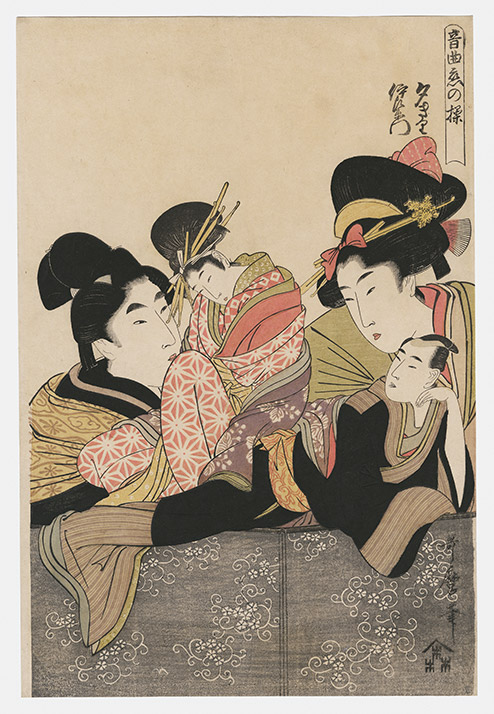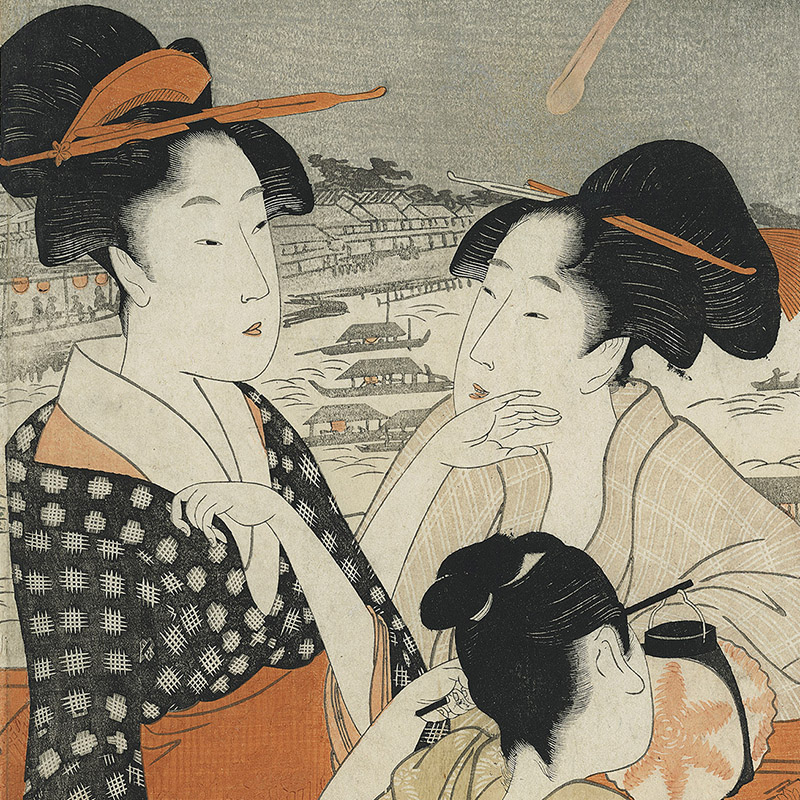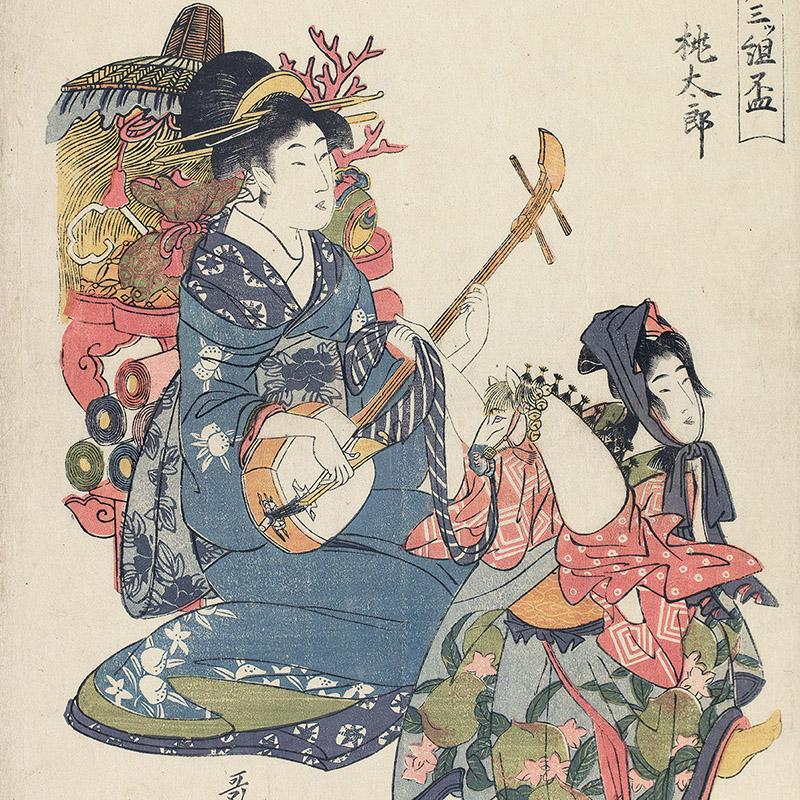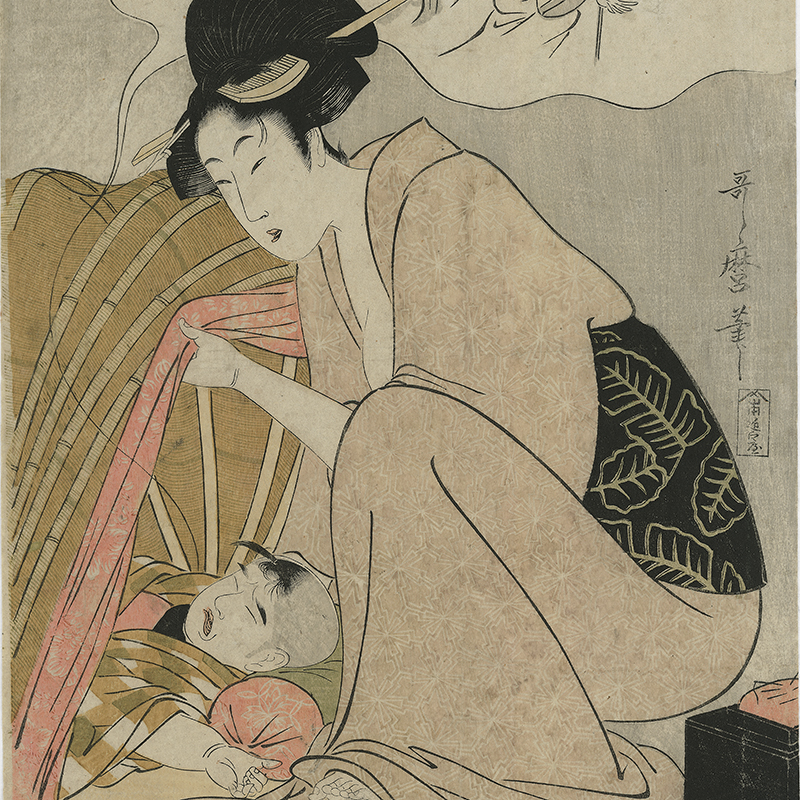Kitagawa Utamaro
1753 - 1806
c. 1801-2
Vertical ôban, 380 x 258 mm
Signed: Utamaro hitsu
Publisher: Moriya Jihei
Series: Manipulations of Love with Musical Accompaniment - Ongyoku koi no ayatsuri
Superb impression, colour and condition. Exceptional retention of the pigments with fine blind printing and tsuyazumi (gloss black).
Full size with extra paper showing left and right.
Another fine impression of this print is at the Museum of Fine Art, Boston (accession number 11.14379).
The series Ongyoku koi no ayatsuri shows men and women manipulating puppets, each pair representing a famous pairs of lovers. In this case the famous tayu Yugiri of the Ogiya House and her lover Fujiya Izaemon. On Yugiri’s kimono we see her insignia, the paulownia. The story relates how Fujiya Izaemon’s family cut him off because of his philandering in the licensed quarter and of his jealousy of her other clients. However, all ends well with the family relenting and them marrying.
Reference:
S. Asano- T. Clark, The Passionate Art of Kitagawa Utamaro, British Museum, 1995, p. 224, nos. 381-2.
Price on application
Information on the master
KITAGAWA UTAMARO
c. 1753 - 1806
The most celebrated artist of women of the whole Ukiyo-e school, Utamaro was a disciple of the painter Toriyama Sekien, an artist originally trained by the painting school of Kano. Utamaro's first major artistic work was the cover for a book on Kabuki plays, in 1775, that he published under the name of Toyoaki. To this, several kabuki related works followed. He adopted the name of Utamaro in 1781, starting then to produce women portraits. He joined the publisher Tsutaya Juzaburo, probably in 1783, and became the main artist in his atelier. With Tsutaya Utamaro's work blossomed steadily during the 1780s. He strove hard to develop a fresh and cool new depiction of women, and after a period during the late 1780s and early 90s when he concentrated on illustrated albums and sets of prints inscribed with kyoka poems, he managed to establish his own unique style and replace Kiyonaga as the premier designer of prints of women. He excelled at sensuous depictions, capturing the most delicate nuances of female emotional states, in a very different manner from Kiyonaga. The death of Tsutaya Juzaburo in 1797 deeply affected Utamaro and his creativity suffered. In 1804 he faced serious problems with the authorities, who considered that some of his prints offended the Shogunate. He was imprisoned and sentenced to 50 days in handcuffs. He died two years later.
Other works of the master



